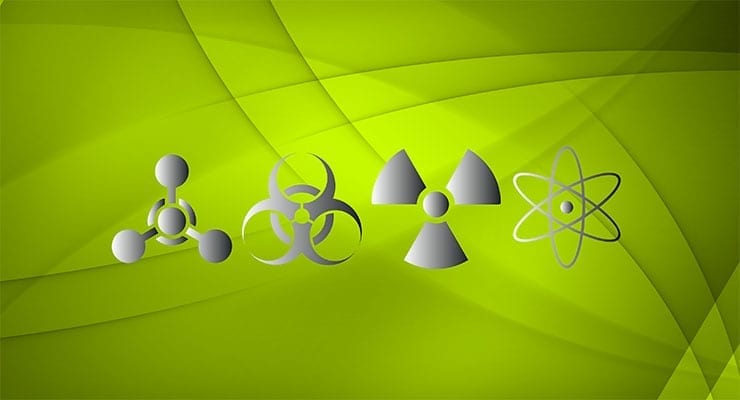Military program managers briefed biopharmaceutical industry and research organization representatives during a Nov. 2 Industry Day, part of an initiative to establish a unique consortium for advanced development efforts to support the Department of Defense’s (DoD) medical pharmaceutical and diagnostic requirements.
Lead by the Joint Project Manager for Medical Countermeasure Systems (JPM-MCS), the Consortium OTA (Other Transaction Agreement) business model is a new binding contractual instrument to work with DOD to develop FDA Licensed Chemical, Biological, Radiological, and Nuclear (CBRN) Medical Countermeasures. The Consortium OTA will have an initial $10 billion ceiling and a 20-year performance period.
The effort aims to:
- Form robust long term partnerships and commitments with qualified providers
- Pursue effective collaborative research with non-traditional technology providers
- Move away from burdensome and slow RFP process
- Create a rapid response capability to emergent threats and requirements
- Deliver enabling technologies that will support the development MCM prototypes
- Allows rapid screening of protective molecules and constructs for testing
- Reduce bid & proposal costs with use of white papers before proposal preparation
- Overcome obstacles of traditional Intellectual property and FAR requirements
- Provide faster access to partners with promising therapeutic countermeasures
- Place technically acceptable proposals placed in the “basket” awaiting funding
- Provide unity of effort among defense organizations from discovery through FDA Approval
- Centralize business management and subcontract management
LTC Marla Ferguson, Joint Product Manager for Chemical Defense Pharmaceuticals, briefed attendees on requirements for therapeutics delivered via autoinjector for the treatment of nerve agent casualties and therapeutics; prophylactics for Acute Radiation Syndrome; well characterized animal models CBRN medical countermeasure development; and innovative and emerging technologies to support rapid development and delivery systems.
Joint Product Manager for BioDefense Therapeutics, LTC Eric G. Midboe described immediate priorities for enabling prototype technologies for therapeutic medical countermeasures targeting viral, bacterial and biological toxin targets of interest to the DOD, including:
- Bacterial threats (multi-drug resistant)
- Yersinia pestis
- Burkholderia pseudomallei
- Bacillus anthracis
- Francisella tularensis
- Brucella spp
- Burkholderia mallei
- Filoviridae (Ebolavirus, Marburgvirus)
- Hantavirus
- Alphaviruses (WEE, VEE, EEE)
- Toxin therapeutics – Botulinum Neurotoxin, Ricin, SEB etc.
According to LTC Midboe, enabling technologies can include animal models of viral, bacterial or biological toxin disease and pathogenesis (multiple routes of exposure), assays, diagnostic technologies or other platform technologies that can be applied to development of approved or licensed MCMs.
LTC Victor A. Suarez of the Joint Vaccine Acquisition Program (JVAP) discussed expectations of performers and anticipated requirements for development of vaccines providing broad spectrum protection against a range of biological agents and a range of exposure routes.
JVAP requirements include:
- Transition of target protective molecules to industry partners for manufacture
- Vaccine candidate testing in appropriate animal models and Phase 1 Clinical Trials
- Taking selected vaccines to FDA licensure using animal rule
The Industry Day also highlighted the Advanced Development & Manufacturing Capability (ADMC), a contract awarded to Nanotherapeutics in 2013.
Tim Belski, ADMC Joint Product Director, discussed the potential for consortium partners to utilize ADMC capabilities for biologics process development; manufacturing of monoclonal antibodies, vaccines and recombinant proteins; small molecule development; and regulatory and clinical trial support.
The ADMC provides stable manufacturing facilities for multiple products and teaming capabilities for companies without inherent capabilities or who do not wish to use their own capabilities on DoD products.
Letters of Intent for the Consortium OTA are due by Nov. 24, 2015. Further details are available via Solicitation Number: W15QKN-16-Z-3188.



